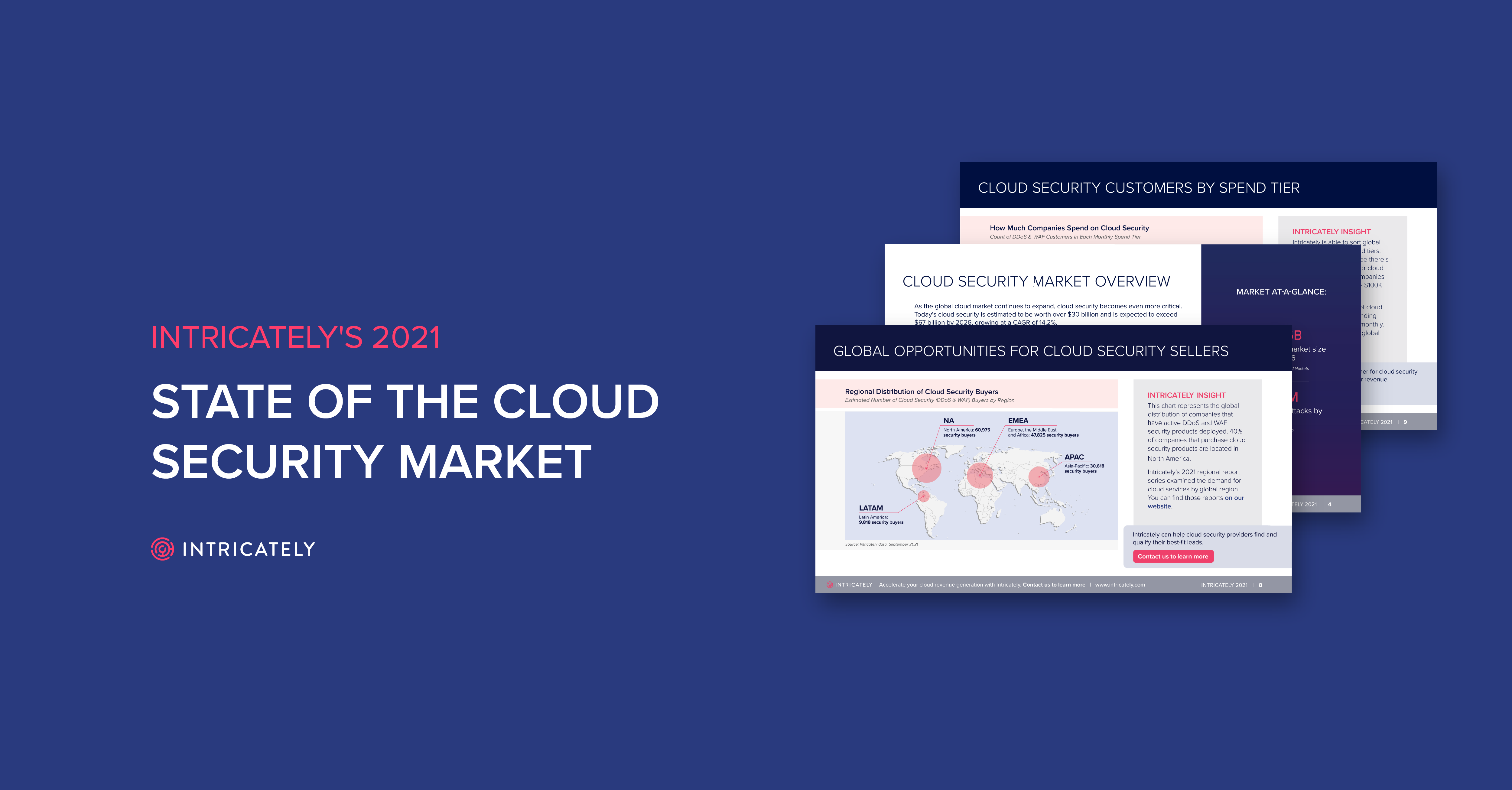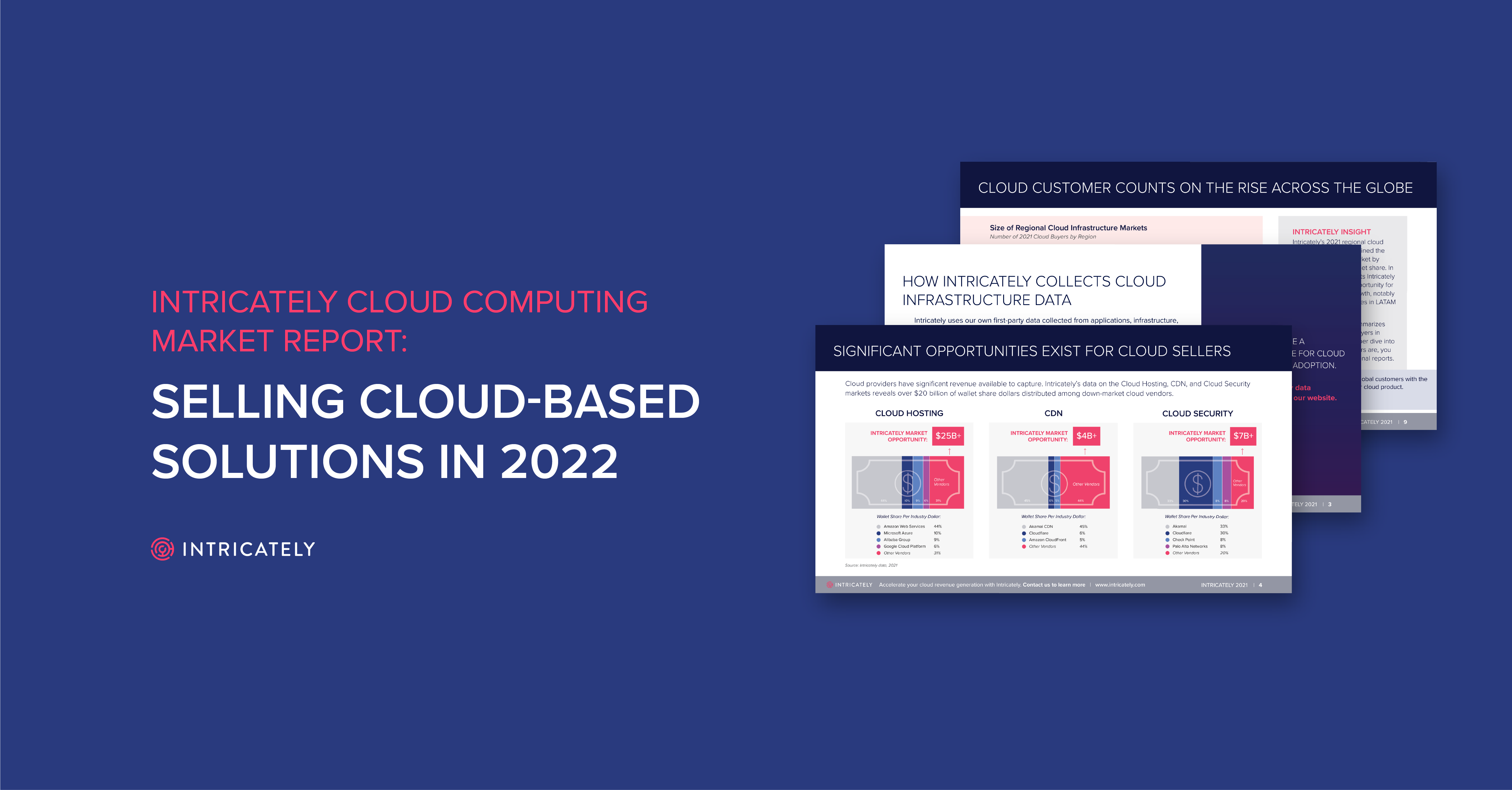
 back to all posts
back to all posts
6 Actionable Takeaways for Cloud Marketing and Sales Professionals from Intricately's Selling in the Cloud Podcast

Selling in the Cloud is Intricately's podcast for cloud sales and marketing professionals, focused on how the cloud continues to grow and the evolving opportunities it presents.
The ultimate goal of Selling the Cloud is to inform and enable cloud sales and marketing professionals with the latest knowledge and relevant trends to have the right conversations with the right prospects at the right time. Selling is largely about identifying opportunities and offering timely solutions, and Selling the Cloud does just that.
Here are six important takeaways for cloud marketing and sales professionals, straight from our brilliant guests.
1. Data plays an essential, expanding role.
Quality data about customers and prospects is the fuel that drives the engine of today’s cloud marketing and sales professionals – enabling them to identify leads, understand customer intent, effectively nurture prospects and close more (and bigger) deals.
As Sangram Vajre, Co-Founder of Terminus and author of ABM is B2B, explained during a podcast episode: "Data in general has never been more important . . . it is fundamentally changing the way companies are seeing the next set of customers. Instead of being reactive, they're becoming proactive,” able to predict and then facilitate the next step in the buying journey.
2. Ensure marketing, sales, and customer success (CS) are aligned.
All business functions must contribute to driving revenues. Technology, internal processes and people are increasingly being aligned to propel the entire business forward. As Vajre explains it, marketers must understand their role – “our value [as marketers] is to drive sales forward. . . marketing and sales [must work] as one team.”
When it comes to ABM, for example, Vajre notes that marketing, sales and CS must agree on which accounts to target: “if you don't start with targeting the right accounts, no matter how great your marketing and sales and your go-to-market strategy is, you're just going after and knocking on the wrong door.” Coordinating and aligning tech, processes and people is foundational for success – and data is key to doing exactly that.
3. For ABM, the alignment of marketing, sales, and CS is especially important.
An STC episode with Emilia D'Anzica, customer success expert and founder of Growth Molecules, reinforces Vajre’s focus on alignment with CS, especially when it comes to account-based management/ABM: D’Anzica says that generating more revenues requires “an account management team that collaborates very closely with customer success, and has a [customer] journey map with key touch points," so that each function and each person within that function can identify necessary action to drive sales.
D’Anzica discussed one successful ABM initiative where “the marketing team and sales teams were selling to certain personas. But the customer success team was interacting with different personas [users, not necessarily buyers]. . . We were building that ABM strategy across the whole customer lifecycle [and] incorporating all the different personas, understanding what their pain points were and how to make [each persona] look like a hero.”
4. Use data to drive storytelling.
Effective content and storytelling are vehicles that drive relevance for customers and prospects. Data is the GPS for finding and moving towards that relevance for customers, becoming a foundation for storytelling. Matt Heinz, President of Heinz Marketing, explained in one STC episode how his experience as a journalist helped him tell better stories: he learned “the need for condensed storytelling, to be brief in how you tell stories. . . [T]o know your audience, know what they care about, and know what's in it for them to make sure the story isn't just well told, but to make sure the story is relevant.”
Without a common, data-enabled understanding between storyteller and customers, there’s no relevance and no story.
5. Put your customers first.
Heinz emphasized the need to put customers first, not the company’s offerings: “the prospect is the hero. They're going through a journey. They're discovering there's a problem, there's going to be a pain of change inside their organization.” Once the customer is understood, the communication can begin, says Heinz. When does marketing reach out and when does sales get involved? “Which prospects do we call and why? None of those things matter unless you put the prospect story and their journey first and foremost, to guide the rest of your strategy and execution.” Data enables that outreach.
6. Use data to prioritize leads and actions.
Daniel Day, VP of Marketing at Rollbar, is a big believer in using data to drive customer insights across the organization. In his STC episode, he says that data "gives you such a clear insight to be able to bifurcate and segment in a way that was not possible before. It helps to cross that chasm between marketing and sales where marketing stops being order takers and starts being data partners."
Data also helps marketing and sales know what customers/accounts to prioritize: “I don't hand them [accounts] and say . . . go figure it out, but it's like let's find out why each one of these accounts is special . . . Let's see how it maps to our value proposition. Let's see if we can figure out specific solutions or use cases for this customer or prospective customer based on data.” That data-enabled approach to lead management facilitates sharper prioritization, closer functional alignment, improved ABM strategies, better customer nurturing and (yes) more revenues.
Listen, subscribe, and get inspired
For a weekly dose of essential insights to help you work smarter as a cloud sales and marketing professional, tune in to Selling in the Cloud today!

3 Trends Shaping the Evolving Cloud Hosting Market

4 Ways Cloud Marketing Leaders Can Get the Most From Their Budgets in 2022

How to Perform Account Segmentation and Prioritization



Intricately’s Cloud Computing Market Report: Selling Cloud-Based Solutions in 2022


Introducing Intricately's 2021 Cloud Verticals to Watch: Publishing, Marketing and Advertising, and Media


